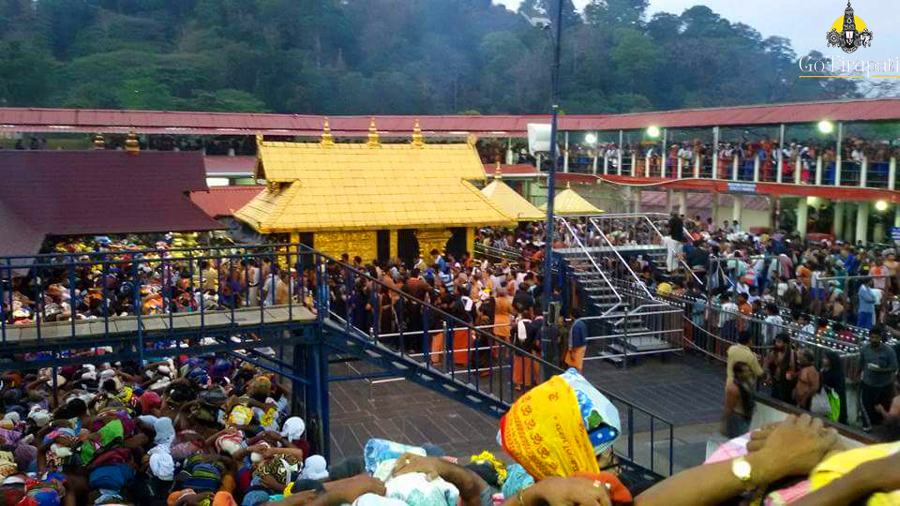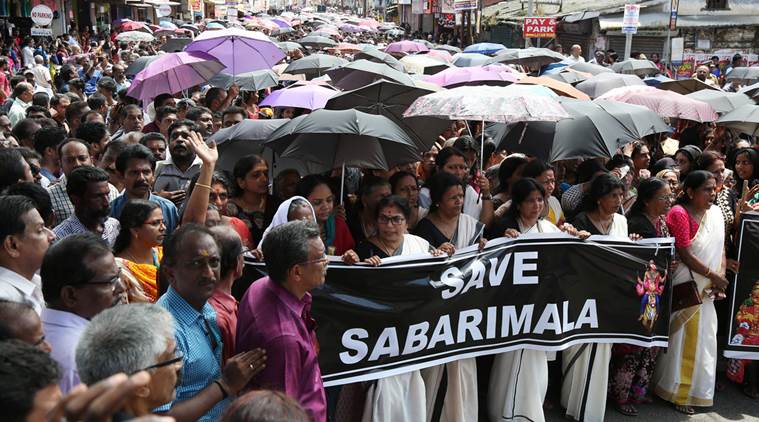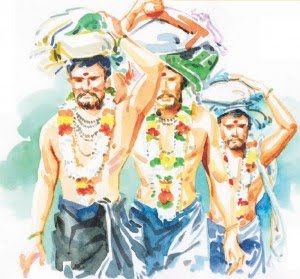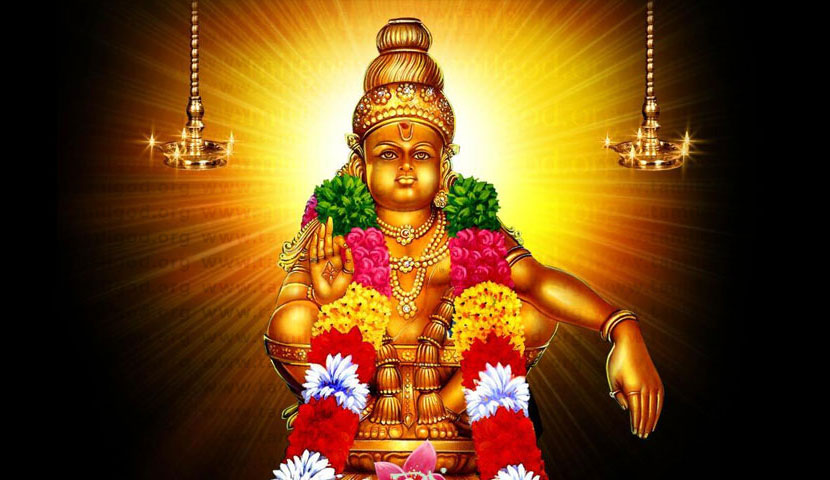
Sabarimala temple is a religious place which has some tradition that might not be acceptable in the current era. We have started research on it and find out that it is something that need to understand that there is nothing like a ban before. We will go through the case of 1991 to understand what it was mentioned in the judgement. We will try to speak simple as we can.
“For the last 20 years woman [sic] irrespective of their age were allowed to visit the temple when it opens for monthly poojas. They were not permitted to enter the temple during Mandalam, Makaravilakku and Vishu seasons.” (S. Mahendran vs The Secretary, Travancore (1991)(8) [AIR 1993 Ker 42])
Supreme Court of India will soon be hearing the final arguments on the question of the restriction imposed on women in the reproductive age from entering the Sabarimala temple in Kerala, in southern India. The court had earlier questioned the constitutional basis of the restriction, at the behest of a the public interest litigation (PIL) placed before the apex court of India by the Indian Young Lawyers Association (IYLA) where it called for allowing women of all ages to be allowed entry to the temple.
The petition has also come to the special attention of the court owing to numerous death threats to the lawyers who gave the petition. Prayar Gopalakrishnan, the Sabarimala temple chief who had remarked that women will be allowed to enter the temple with the invention of machines to check the purity of women, triggered nationwide debates on the notion of menstruating women being impure and the viral campaign of #happytobleed which was followed by a letter written by a young college student Nikita Azad to Prayar Gopalakrishnan. The perpetuation of such discrimination on the basis of women’s natural biological process of menstruation goes against the fundamental rights, against freedom from discrimination which is guaranteed by the constitution. It can also be viewed as a restriction on access to public spaces such as the public roads from Pampa to Sannidhanam (Ayyappa temple) which is also against fundamental rights guaranteed to citizens of India irrespective of caste, creed and gender.

I will now be considering the case history of Sabarimala temple entry of women as it came up during the early 90s. The 1991 S. Mahendran vs The Secretary, Travancore (1991), [AIR 1993 Ker 42], Kerala High Court judgement is being cited by those upholding the ban on women entering the Sabarimala temple in Kerala. As I was glancing through the full judgement, it was evident that young women in the reproductive age were not banned from entering the temple except during mandalakalam, makaravilakku and vishu seasons. This has been also evident from the former Devaswom (Travancore Devaswom Board) Commissioner Smt. S. Chandrika’s statement that “the entry of young ladies in the temple during monthly poojas is not against the customs and practices followed in the temple.” Here she also admits that her granddaughter’s first rice feeding ceremony (choroonu) was held at Sabarimala temple. All these details contained within S. Mahendran vs The Secretary, Travancore (1991) states that young women were free to go to Sabarimala except during the three seasons mentioned above.
Justice Mishra, while going through the recent PIL submitted by IYLA had asked Travancore Devaswom Board what proof it had to say that women never entered the temple 1500 years ago. The recent statements given by the board in this petition seems to be countering the statements made by former Devaswom commissioner Smt. S Chandrika in 1991 about women having no restriction to enter the temple apart from the three seasons that has already been mentioned. As the case proceeded in 1991 with all the respondents, the High Court Bench of Justices K. Paripoornan and K.B. Marar examined the Sabarimala Tanthri since the Travancore State Manual stated that only the Tanthri could authoritatively give answers on such questions. Tanthri Sri Neelakandaru testified that women belonging to the restricted age group of 10 to 50 years were prohibited from entering the temple even before 1950, although the statement made by Smt. Chandrika had said that the entry of young ladies in the temple was not against the customs and practices of the temple. The High court gave the final order that the restriction on women in the age group of 10-50 is in accordance with the customs of the temple and does not violate of Art 15, 25 and 26 of the constitution.
One can see how the total ban on the women of reproductive age from entering the Sabarimala temple stemmed from “some devotees’ fear that women of menstrual age may defile the temple by their presence” (MG Radhakrishnan, 1995). Kerala Devaswom Minister G Sudhakaran had also remarked in 2007 that there is evidence to prove that women had visited the temple and there is need to restore a right once enjoyed by women. Nivedita Menon (2004:3) talks about the “the impossibility of appealing to women as a category unmediated by other identities like religion and caste.” It is in such circumstances that one has to see the vision of the framers of the Indian constitution when they did not go for complete separation of the state and the religion. The words of B. R Ambedkar (Chairman of the drafting committee of the Indian constitution) comes as a particular reminder in the understanding of the role of the constitution and legal machinery to be able to provide social justice. He had remarked that “the religious conceptions in this country are so vast that they cover every aspect of life, from birth to death. There is nothing which is not religion and if personal law is to be saved, I am sure about it that in social matters we will come to a standstill.” Here one can see where Ambedkar hints on the conscience collective drawing from religion that they cover almost all aspects of life and death. Durkheim, the classical sociologist examined the situation of mechanical solidarity where “the totality of beliefs and sentiments common to average citizens of the same society forms a determinate system which has its own life; one may call it the collective or common conscience (Durkheim, 1893).” While conscience collective holds the society together, it also necessitates changes to the nature of solidarity when the society becomes more diffuse and the constituent elements become more distinct and developed.
The intervention of the state law into the customary practices of the various communities is seen to have produced far-flung changes in the nature of these laws which existed prior to them. It is to be noted that this is not just a linear process whereby the non-state acquires the elements of the state law, but also a case where the state law or the dominant law also seems to assimilate the elements of the customary law. The courts in India have led social reform agendas in a country that is still largely enveloped by some form of conscience collective which can be oppressive to marginalised groups in the society such as scheduled castes, minorities and women. India has also witnessed murders of social reformers and activists such as Narendra Dabholkar who had also fought gender bias in temples and places of worship. Thus, the emancipatory role of the apex court is of utmost importance in fighting such deep rooted biases which exist in the society.
To conclude, the Supreme Court has rightly cited constitutional guarantees of equality to question the restriction imposed on women in the reproductive age group. “Why can you not let a woman enter? On what basis are you prohibiting women entry? What is your logic? Women may or may not want to go [to worship at Sabarimala], but that is their personal choice,” remarked Justice Dipak Misra, heading a three-member apex court bench on the case, “you cannot prevent them from worshipping at the shrine.” Radhakrishnan (1995) examines how the then president of the Travancore Devaswom Board, N. Bhaskaran Nair, had hinted at possible changes when similar demands for women’s entry came up in the early 90s by saying, “I respect all the temple conventions but, personally, I think a change is inevitable. Once the lower caste people were denied entry into the temples. The ban on women may also change.” One can see that the total ban on women in Sabarimala temple is neither historical nor entirely based on religion, but merely based on the decisions of an all-male establishment which is free to stipulate rules which discriminate against women on the basis of biological and physical conditions intrinsic to their gender.
What is the story behind Sabarimala Temple?
The temple at Sabarimala for over 25 years and one question that people ask me often is “Who placed the restrictions on women entering the temple?” And the short answer is, Ayappa himself! According to legend, Ayappa is celibate so that he can focus on answering the prayers of his devotees. And he will remain celibate till the day kanni swamis (first-time devotees) stop coming to Sabarimala.
Ayappa is a historical figure. He was the prince of Panthalam, a small kingdom located in the Patthanamthitta district in Kerala. The palace that he grew up in still exists and you can visit it. One of Ayappa’s most loyal subjects was Vavar (Malayalam for Babar), an Arab commander, whom he defeated in battle. Vavar is today installed, not as an idol but in spirit, at a mosque in Erumeli. He protects pilgrims who make the difficult 40-km trek through the jungles to the main temple at the top of the hill. Muslims too make the journey to the mosque at Erumeli and the Vavar shrine, which faces the temple on the hill top.
Sabarimala is one of the few temples in India that welcomes men and women of every caste. Devotees dress uniformly in black. The colour signifies a renunciation of all worldly pleasures, but it also means that everyone is equal before Ayappa, irrespective of caste. In fact, the hierarchy among devotees is based on how many times they have made the pilgrimage and not on caste. Pilgrims live an ascetic life for 40 days before undertaking the journey to Sabarimala. During that time , they pray in groups. A Dalit can lead the prayers and a Brahmin in the group must still touch his feet. You won’t see this anywhere else.
Apart from the historical Ayappa, there is a puranic legend associated with him, which says he is the son of Vishnu and Shiva. This is believed to be a union of forces, not the result of an actual physical relationship. It means he has traits of both gods and that’s what makes him a particularly potent deity in the eyes of his devotees.Any way you look at it, Sabarimala is the epitome of inclusiveness. It’s one of the few, if not only temple, that openly welcomes people of all faiths and castes. So, why restrict women?
 For the answer, we need to go back to the legend. According to the puranas, Ayappa was born to destroy a female demon who, thanks to a boon, could only be vanquished by a child born of both Shiva and Vishnu. When Ayappa fulfils his destiny by killing her, a beautiful woman emerges from the body. She had been cursed to live as a demon, but her killing reversed the curse. Now free, she asks Ayappa to marry her. He refuses, explaining to her that his mission is to go to Sabarimala where he would answer the prayers of his devotees. However, he assures her, he will marry her when kanni-swamis stop coming to Sabarimala. She now sits and waits for him at a neighbouring shrine near the main temple and is worshipped as Malikapurathamma. With hundreds of thousands of new devotees pouring in every year, hers will be a long wait.
For the answer, we need to go back to the legend. According to the puranas, Ayappa was born to destroy a female demon who, thanks to a boon, could only be vanquished by a child born of both Shiva and Vishnu. When Ayappa fulfils his destiny by killing her, a beautiful woman emerges from the body. She had been cursed to live as a demon, but her killing reversed the curse. Now free, she asks Ayappa to marry her. He refuses, explaining to her that his mission is to go to Sabarimala where he would answer the prayers of his devotees. However, he assures her, he will marry her when kanni-swamis stop coming to Sabarimala. She now sits and waits for him at a neighbouring shrine near the main temple and is worshipped as Malikapurathamma. With hundreds of thousands of new devotees pouring in every year, hers will be a long wait.
And that is why women do not go to Sabarimala. It is partly out of empathy for Malikapurathamma and her eternal wait and it’s also out of respect for Ayappa’s commitment to answer the prayers of his devotees.Since he is celibate, he should not be distracted. For hundreds of years, devotees had bought into this story. It has nothing to do with menstruation or being unclean. Anyone who goes to Sabarimala knows that.
Historical facts are something that depends on the scriptures it seems like still lots are missing or might be updated by some of the people whom we don’t even know. Vavar (Malyalam of Babar), a muslim commander, reached out to South. Guys we are trying what we can find but eventually we believe that unless there is the true scripture we could find we can’t say anything on any religious faith. We found one blog which says there was the Jain and Buddh shrine which was destructed by Lord Parsuram? Amazing facts that still to figure out what is true or false.
At this point we can only say what is our constitution believes we should go with that and try not to practice religious faith over humanity. When Tsunami or any natural calamity come then who will live and die can we predict now? Religious practices were made to help us in self control its not about to hurt feeling.

